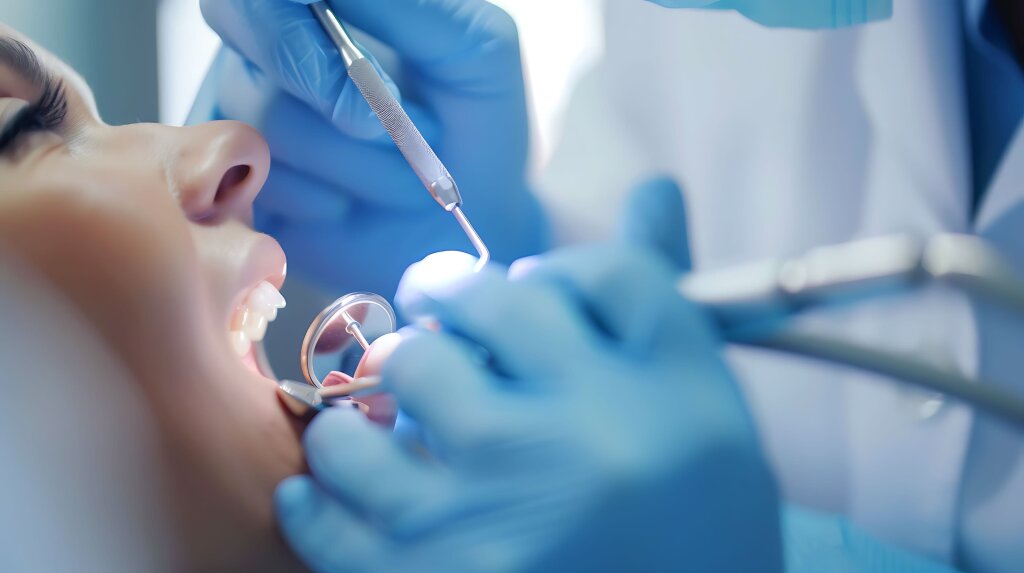Orthodontic treatment is a method used to align teeth properly and correct jaw structure. Traditional braces and clear aligners, which have gained popularity in recent years, are the two most common methods used in orthodontic treatment. But what are the differences between these two treatment methods? In which situations should clear aligners be preferred, and when are braces more suitable? In this article, we will thoroughly explore the differences between clear aligners and braces used in orthodontic treatment.
What Are Clear Aligners?
Clear aligners are specially designed, custom-made transparent appliances used to correct teeth alignment. Brands like Invisalign produce these nearly invisible aligners, making them a popular choice for patients with aesthetic concerns. Clear aligners apply gentle pressure on the teeth, gradually moving them into the desired position. Each set of aligners is usually worn for two weeks before moving on to the next set.
What Are Braces?
Braces are a traditional orthodontic treatment method consisting of brackets placed on the teeth and wires connecting these brackets. Braces, which can be made of metal, ceramic, or plastic, are worn for a specific period to align the teeth. Braces are particularly effective in treating more complex orthodontic issues and have been a reliable treatment method for many years.
Key Differences Between Clear Aligners and Braces
Clear aligners and braces represent two different approaches to orthodontic treatment. Each method has its unique advantages and disadvantages. Here are the key differences between these two treatment methods:
Aesthetic Appearance:
Clear aligners are an excellent option for patients with aesthetic concerns, as they are nearly invisible. Braces, especially metal brackets, are quite noticeable. Ceramic or clear brackets may be less conspicuous but are still not as discreet as aligners.
Comfort and Ease of Use:
Clear aligners can be easily removed, providing convenience when eating or brushing your teeth. Braces, on the other hand, remain fixed and require more care during these activities. Additionally, braces can lead to food accumulation, making oral hygiene more challenging.
Treatment Duration:
Clear aligners typically require a shorter treatment period. However, this duration depends on the patient’s adherence to the treatment. If the aligners are not worn as recommended, the treatment may be extended. Braces, used for more complex dental issues, generally require a longer treatment period.
Effectiveness:
Braces allow for a broader range of tooth movement and are more effective in resolving complex orthodontic problems. Clear aligners are effective for mild to moderate alignment issues. However, braces may be a more suitable option in cases of severe crowding, tooth rotation, or significant misalignment.
Cost of Treatment:
Clear aligners are generally more expensive than braces. However, the aesthetic advantages and ease of use they offer can justify the cost for some patients. Braces may be more cost-effective depending on the treatment duration and materials used.
Maintenance and Cleaning:
Clear aligners can be easily cleaned after brushing your teeth. Additionally, you can continue to brush and floss normally when the aligners are not worn. Braces, however, make brushing and flossing more challenging. Plaque and food particles accumulating around the brackets can lead to cavities and gum disease.
When Should Clear Aligners Be Preferred?
Clear aligners are ideal for patients with aesthetic concerns and those with mild to moderate alignment issues. Aligners are highly effective in cases where teeth need to be slightly adjusted. They are also an excellent option for patients seeking more flexibility in their daily lives and wanting to avoid the visibility of braces in social settings.
When Should Braces Be Preferred?
Braces are effective in treating more complex orthodontic problems. They are a better option in cases of severe crowding, significant misalignment, or when jaw alignment is needed. Braces are also preferred when more extensive tooth movement is required.
Orthodontic treatment provides significant benefits for dental health and aesthetics. The choice between clear aligners and braces should be made based on the patient’s needs, treatment requirements, and aesthetic preferences. Both treatment methods can straighten your teeth and give you a healthier smile. A detailed consultation with your dentist will help determine the most suitable treatment method for you.






